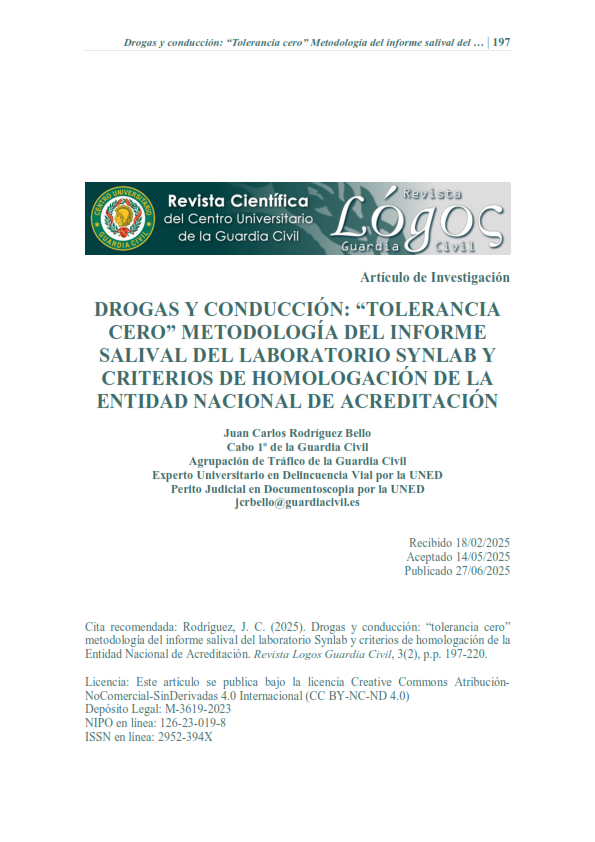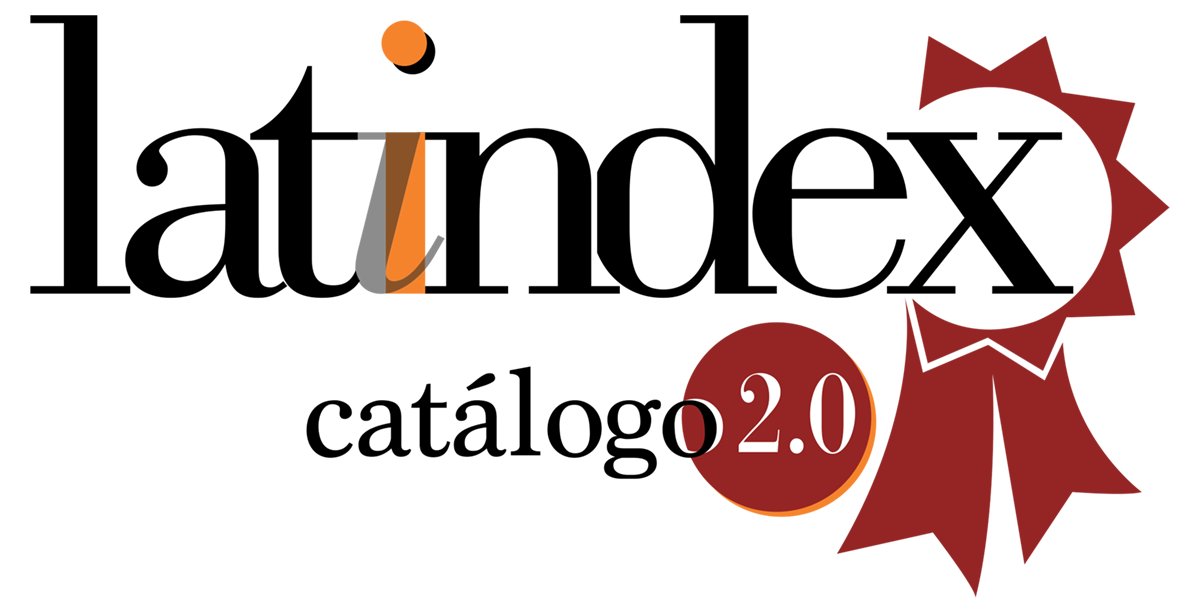Drogas y conducción: “tolerancia cero” metodología del informe salival del laboratorio Synlab y criterios de homologación de la Entidad Nacional de Acreditación
Palabras clave:
Seguridad Vial, drogas, prueba salival, criterios de homologación, puntos de corte, análisis clínicoResumen
El “Plan Mundial - Decenio de acción para la Seguridad Vial 2021-2030” de la Organización Mundial de la Salud destaca que, la conducción bajo los efectos del alcohol es una de las principales causas de siniestros viales. Por ello, insta tanto a gobiernos como a empresas a crear leyes, aplicar controles y fomentar la educación vial para reducir los siniestros viales. La meta para 2030 es reducir a la mitad los fallecidos y las víctimas por siniestros viales causados por el alcohol o las drogas. En España, la Dirección General de Tráfico y el Observatorio Nacional de Seguridad Vial, regulan la conducción con sustancias psicoactivas mediante la Ley de Seguridad Vial y el Código Penal, castigando a quienes conduzcan bajo su influencia. Sin embargo, no existe una tasa objetiva para medir el impacto de las drogas en la conducción, por lo que se recurre a la observación de signos externos. Los datos que la DGT maneja, indican que un tercio de los fallecidos en siniestros viales superaba el límite de alcoholemia, una de las causas es el ocio nocturno, que influye en el consumo de alcohol y drogas y aumenta consecuentemente, el riesgo de sufrir un siniestro vial. Además de lo anterior, ser el pasajero de un conductor que conduce bajo los efectos del alcohol o las drogas, también incrementa la probabilidad de convertirse en víctima, a pesar de las campañas de concienciación, de los controles y de la falta una conciencia social sobre la gravedad real de este problema. Finalmente, debemos señalar la necesidad de un seguimiento especial para conductores reincidentes, multirreincidentes o adictos, mediante la combinación de medidas de sanitarias y de Seguridad Vial.
Descargas
Citas
Real Decreto Legislativo 6/2015, de 30 de octubre, por el que se aprueba el texto refundido de la Ley sobre Tráfico, Circulación de Vehículos a Motor y Seguridad Vial del Interior. BOE núm. 261, de 31 de octubre de 2015 Referencia: BOE-A-2015-11722
Positivo en drogas: procederá formular denuncia por infracción del art 14.1. 5ª de la LSV por presencia de drogas (1000 Euros / 6 puntos)”.
El conductor debe utilizar el vehículo con la diligencia, precaución y atención necesarias para evitar todo daño, propio o ajeno, cuidando de no poner en peligro, tanto a sí mismo como a los demás ocupantes del vehículo y al resto de usuarios de la vía, especialmente a aquellos cuyas características les hagan más vulnerables”.
Ver: https://revista.dgt.es/es/noticias/nacional/2022/04ABRIL/0404_Campana-alcohol-Cifal.shtml
La normativa nacional RD 818/2009 Reglamento General de Conductores y la norma europea CD 439/1991, CD 126/2006 y CD 36/2012, señala que a estos pacientes (adictos) no se les puede otorgar o renovar el permiso de conducción ya que no presentan aptitudes adecuadas para una conducción segura.

Publicado
Cómo citar
Número
Sección
Licencia
Derechos de autor 2025 Juan Carlos Rodríguez Bello

Esta obra está bajo una licencia internacional Creative Commons Atribución-NoComercial-SinDerivadas 4.0.
-
Atribución — Usted debe dar crédito de manera adecuada, brindar un enlace a la licencia, e indicar si se han realizado cambios. Puede hacerlo en cualquier forma razonable, pero no de forma tal que sugiera que usted o su uso tienen el apoyo de la licenciante.
-
NoComercial — Usted no puede hacer uso del material con propósitos comerciales.
-
SinDerivadas — Si remezcla, transforma o crea a partir del material, no podrá distribuir el material modificado.
- No hay restricciones adicionales — No puede aplicar términos legales ni medidas tecnológicas que restrinjan legalmente a otras a hacer cualquier uso permitido por la licencia.



